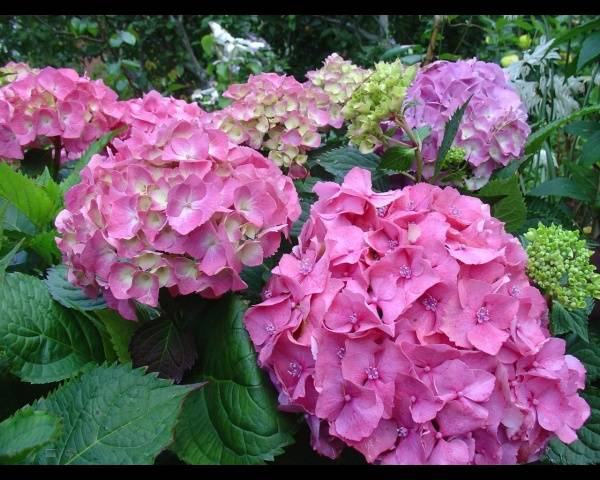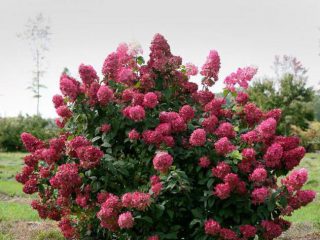Content
During the flowering period, hydrangea looks like a majestic queen in a bright, festive attire. Not every gardener can grow this splendor on their plot, because it is famous for its fastidiousness in cultivation and care. And often, not only its prolific flowering, but also the safety of the bushes depends on such seemingly simple nuances as proper care of hydrangea in the fall. And sometimes you feel very sorry for your work and efforts when, when spring comes, the hydrangea bushes begin to rot or die altogether. To prevent this from happening to such beautiful plants, you need to know and put into practice simple rules for caring for hydrangeas in the autumn.
What care does hydrangea require in autumn?
Despite the fact that the distribution area of hydrangea is very wide, from the southern regions to the northern ones, in the fall these delicate shrubs require special treatment and a little attention and care.
Hydrangea is native to Asian countries - Japan and China. But considering that the climate there is significantly different from the harsh climatic conditions in our country, it is quite natural that you need to care for hydrangea with special diligence. How to do this correctly and what kind of care this heat-loving and light-loving plant requires in the autumn, you will learn from this article.
All preparatory work includes four stages:
- Pre-winter watering of hydrangeas;
- Proper autumn feeding of shrubs;
- Pruning hydrangea in autumn;
- Sheltering bushes for the winter.
Each of these stages requires compliance with terms and rules of care.
Pre-winter watering
With the onset of autumn, many gardeners stop watering hydrangea bushes, naively believing that the moisture contained in the soil is quite sufficient, and the plants do not need it during this period. But this is a misconception, due to which many plants die in winter. After all, before the onset of frost, their root system did not have time to absorb the maximum amount of moisture and nutrients. By the beginning of autumn, the underground part of the plants is very weakened, because during the flowering period it gave a lot of strength to such lush and delicate flowers. And before frost sets in, it needs to restore balance.
It is for this reason that such a little thing as pre-winter watering is very important for shrubs. How to properly care for hydrangea if you do not know the needs of this sensitive plant? After all, all shrubs of the “Hydrangeaceae” species react sharply to a lack or excess of moisture, and this is immediately reflected in flowering next summer.
Autumn watering of hydrangea is necessary if there is no rainfall for a long time and the soil under the bushes is quite dry. Make sure that there is always moist soil under the bushes. Keep an eye on the thermometer before watering your plants. As soon as the night temperature begins to decrease below +5˚С +7˚С, the volume of water should be reduced. And when the thermometer drops to 0˚C at night, watering should be stopped.
If, on the contrary, there is too much precipitation in the fall, then watering is not required. In particularly rainy weather, it is imperative to protect the bushes from waterlogging. This can be done by building a kind of wigwam over the bushes from sticks and lutrasil or by covering the soil under the bush with film. If there is excessive waterlogging, the root system may freeze out during severe frosts.
Autumn feeding
Feeding is an important stage in preparing hydrangeas for winter in the fall. Like many abundantly flowering shrubs, it not only needs, it requires additional care. During the autumn period, the growing season of the plant does not stop; on the contrary, the root system actively grows and accumulates nutrients. However, it is important to remember that autumn fertilizing involves the application of only phosphorus-potassium fertilizers.
Fertilizers containing nitrogen should be abandoned from the second half of August. Causing rapid growth of shoots in autumn, they cause irreparable harm to hydrangeas. Not only will the shrub not be able to fully prepare for winter and regain strength after rapid flowering, young shoots will weaken it even more and the plant will inevitably die or lose the ability to flower.
It is preferable to apply fertilizers based on phosphorus and potassium twice: at the end of August and in mid-September. To feed shrubs, it is better to choose the dry method, that is, scatter granules around the hydrangea bush. The amount of fertilizer depends on the size of the hydrangea bush: for large bushes you will need at least 2 handfuls of fertilizer, for small ones one is enough.
Sprinkle the required amount of fertilizer around the hydrangea and mix it thoroughly with the soil. Make sure that the granules are not scattered too closely at the base of the bush - in concentrated form they cause burns to plants.
Rules for pruning hydrangea
Preparing hydrangeas for winter includes autumn pruning. Despite the fact that many gardeners prefer to leave this stage of work until the spring, experienced gardeners still advise pruning the bush in the fall.
Spring pruning is not only undesirable for shrubs, moreover, it is destructive. In spring, active sap flow begins in the stems of hydrangea. By cutting the stems during this period, you expose the plants to double danger:
- Pathogenic microorganisms and pests easily penetrate into open cuts.
- In spring, a lot of juice flows out through open cuts, which is so necessary for the growth and development of plants.
But you need to remember that not all varieties are subject to mandatory pruning. For some types of hydrangeas, pruning is contraindicated. The thing is that the flowering characteristics of different varieties vary significantly. In some species, buds with peduncles are laid and develop on last year's shoots. Such shoots must overwinter, only after this the shrub of this variety will bloom wildly.
And other varieties of hydrangea contain flower stalks on annual shoots. It can be safely pruned, removing old branches and rejuvenating the bushes.Therefore, in the fall, before you take up the pruning shears or garden shears, you should figure out how to prepare hydrangea for winter and what type of hydrangea grows on your site, as well as the characteristics of its flowering.
An experienced gardener will tell you in the video how to properly prune hydrangea depending on the variety.
Autumn pruning of hydrangea happens:
- Thorough (or radical)
- Cosmetic.
Radical pruning is carried out annually in the autumn. Those species and varieties of hydrangea that bloom on the shoots of the first year of life are subject to pruning. Thorough pruning is carried out in order to:
- Free the bush from last year's old branches. There are not many flowers on them, but they take in a lot of nutrients.
- Free up space for active growth of young shoots. Shrubs that are too dense bloom less and less every year.
- The root system of unpruned bushes is severely and quickly depleted, which also negatively affects its flowering.
- After a few seasons, the bushes will be so overgrown with young growth that subsequently it will be much more difficult to prune them.
Cosmetic pruning has another goal - to clean the bushes from damaged, weak and diseased shoots. Thinning of the bush is allowed, that is, when pruning, part of the young growth is removed, provided that there is too much of it, as well as excess branches and shoots that greatly thicken the hydrangea bushes.
When pruning hydrangea, unnecessary, broken or diseased branches and shoots are cut as low to the ground as possible, at a distance of 5-7 cm from the surface. All work should be carried out only with sharp and perfectly clean garden tools.
Until 3-4 years of age, young bushes are subject to only cosmetic pruning. But older shrubs need to be gradually rejuvenated from year to year. Very old branches are not deleted at once. Such a total cleaning will only harm the bushes. Remove old and low-flowering branches every fall, but no more than 2-3 branches at a time.
Proper work done in the fall to prepare hydrangeas for winter will result in lush flowering of a healthy bush next summer.
Shelter in autumn
Do I need to cover hydrangea bushes in the fall? Experienced gardeners have different opinions on this matter. Some argue that hydrangeas can do without shelter, while others, on the contrary, claim that without proper care, these beautiful flowers can freeze and die. Both are right.
The decision whether to cover a hydrangea in winter, as well as which covering method to choose, must be made based on several factors:
- Features of regional affiliation.
- Features of climatic conditions in each region of Russia.
- The variety and type of hydrangea growing in your garden.
- Humidity.
Few people take this last factor into account when preparing hydrangeas for winter. Nevertheless, it is no less important than the other points.
You will learn about the basic rules and methods of shelter, as well as what materials to choose, from the article “Should I cover hydrangea in winter?”
Conclusion
Many gardeners do not risk growing hydrangeas due to misconceptions about its pickiness. As you can see from this article, caring for hydrangea in the fall is not at all difficult.In this case, it is important to comply with the terms and rules of care. And then these delicate, colorful clusters will bloom magnificently all summer long on your site.




















